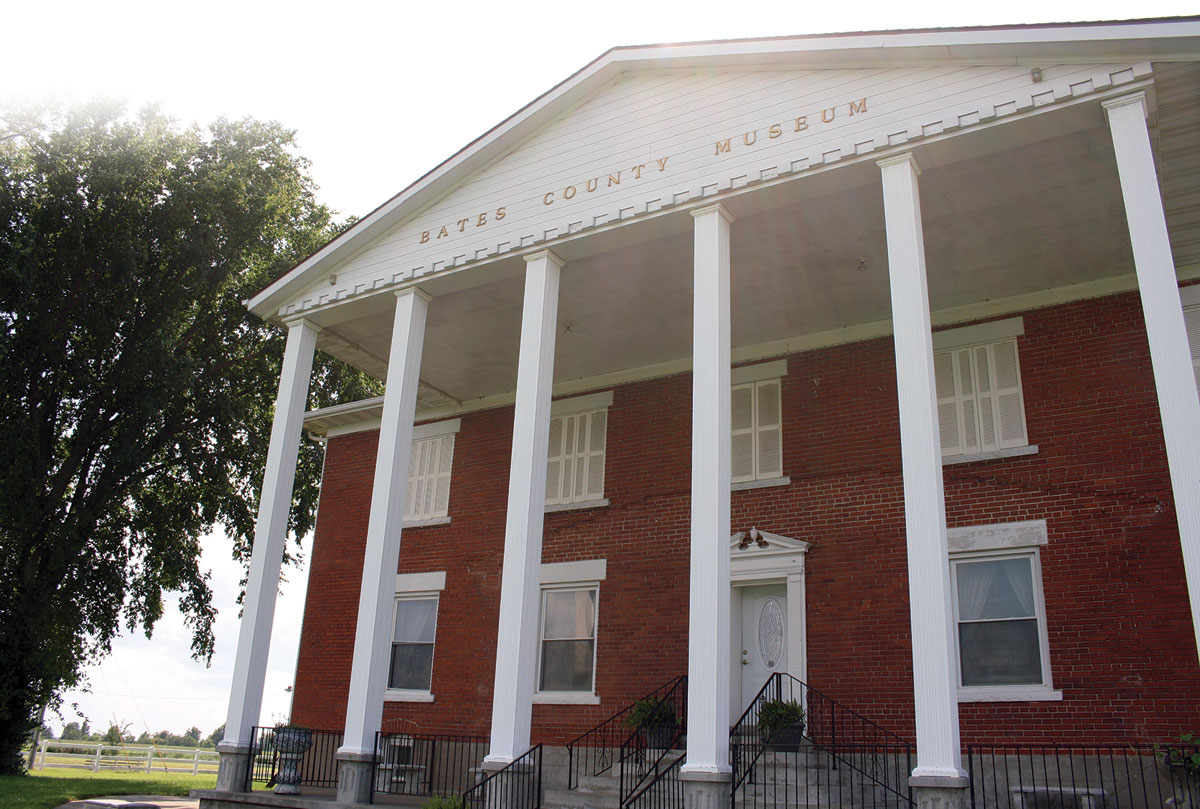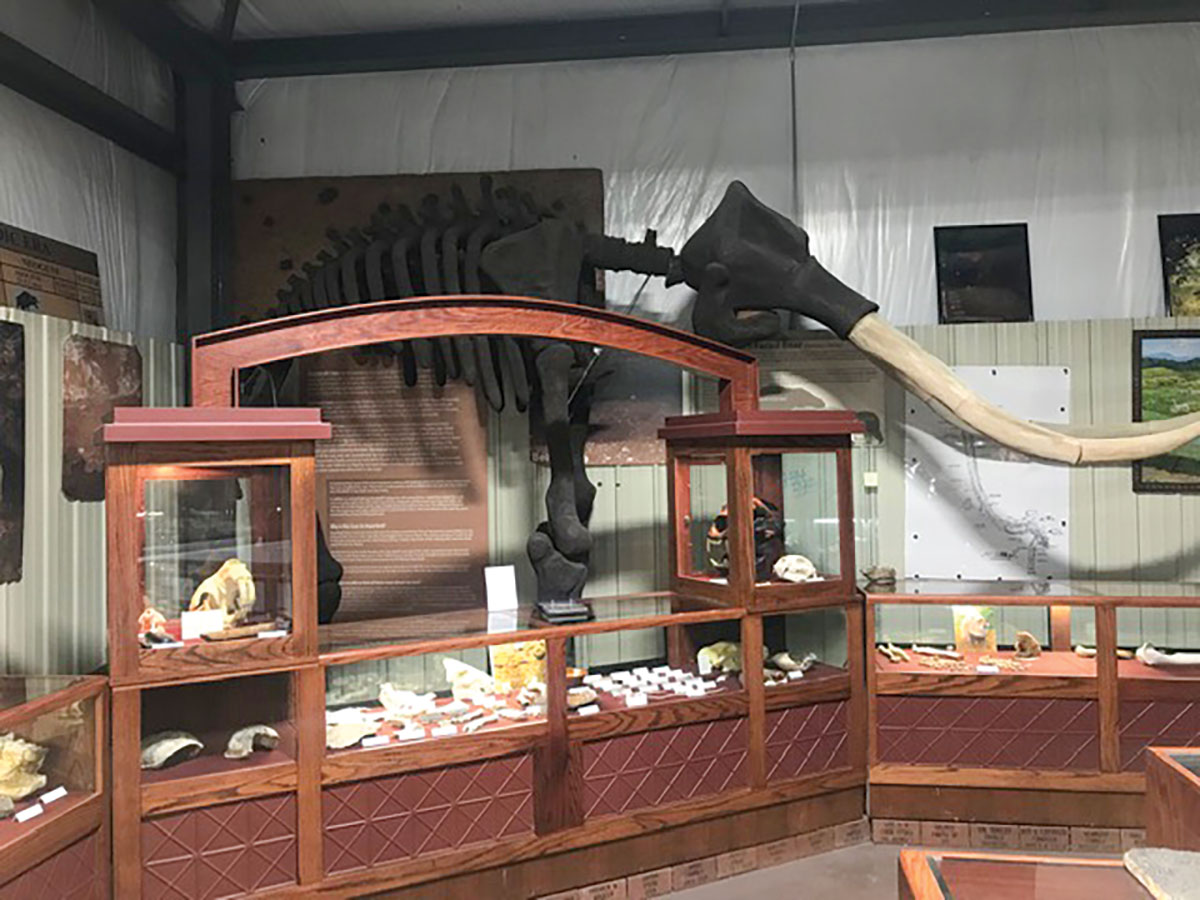
The Bates County Historical Society and Museum works to engage the community
During the Civil War, Bates County, Mo., which was organized in 1841 and named after the second governor of the state, Frederick Bates, like many other Kansas/Missouri border counties, was a hotbed of activity.
It was the site of the first combat engagement during the war of African-American soldiers serving with the Union and against Confederate forces, which occurred on Oct. 28–29, 1862. The First Kansas Colored Division (part of the state militia) fought Confederate guerrillas at the Battle of Island Mound four miles north of present-day Rich Hill, Mo., and the Union forces won.
In retaliation of a massacre of men and boys and the burning of Lawrence, Kan., by Confederate bushwhackers in the summer of 1863, Gen. Thomas Ewing ordered the evacuation of the civilian population from rural areas of Bates and nearby counties, except for within one mile of certain Union-controlled cities, in order to cut off sources of support for Confederate insurgents under Order No. 11. The county was then burnt to the ground. It’s estimated that about 70 percent of the families did not return to Bates County after the war.
The Bates County Historical Society and Museum in Butler, Mo., has been charged since 1961 with preserving the history of the county. Inside the more than 100-year-old building are magnificent murals commemorating the Island Mound battle and the burning of the county, as well as artifacts ranging from the birth of the county to the 20th Century, each with a story and a past all their own.
Peggy Buhr, director of the museum and native of Bates County, said first museum was located in the former county jail in Butler, which doubled as the sheriff’s residence. The structure has since been turned over the county’s sheriff’s posse, which hopes to transform it into a law enforcement museum.
In 2006, the non-profit organization moved to its current location on Elks Drive in Butler, Mo., to what was once the county’s poor farm, the “county home” and a privately-owned extended care facility.
“The property was purchased in 2000 and they worked for six years to get everything ready to move the artifacts,” Peggy said. “The collection here is enormous and there’s tons of things in storage. We still have things stored in an old barn that we have to get here. It’s an ongoing labor of love because the job is so big. We’re making forward progress and as long as we are moving forward, that’s all that matters.”
Peggy said local businessman and collector Ed Robertson made it possible for the society to move to the current location when he left his estate to the historical society.
Union and Confederate uniforms, arrowheads, blacksmith tools, rotatory telephones, a chair that is – according to the donor – from the White House during the Lincoln administration are just a small sample of what can be found at the museum.
“Our little tag line is ‘preserve our history and sustain our heritage,’” Peggy said.
While the Bates County Historical Society and Museum is dedicated to preserving history, it’s not a place of quiet and solitude. The organization has teamed up with various local, state, regional and national organizations for educational programs and events, including archeological digs at the Island Mound site.
The museum is one of only five cities in the state selected to host a traveling Smithsonian exhibit in the summer of 2018. The theme will focus on hometown sports and how they shaped America.
“I thought it would be a wonderful way to engage our community,” Peggy said.
Local families provide many of the exhibits on display at the museum, and the society accepts the provenance given by the donors.
“We have a very generous community,” Peggy said. “We are always rotating things around, moving in new things so there’s something new for people to see.”
One of the largest projects undertaken by the organization is the restoration of its 1877 Steinway Model B Grand Piano. The restoration is being done by Steinway & Sons in New York and the piano will become one of the designated Steinway Heirloom Pianos. The piano was brought to Butler by physician Elliot Pyle in 1877. It remained in the Pyle family after his death and was donated to the museum by his daughter Eunice in 1979. Eunice taught countless children to play the piano on the old Steinway. Once completed, the newly restored piano will be housed at the museum. It will not, however, be an artifact kept off limits to the public. Peggy said the Steinway will be made available for special events, and will once again be available for local children to play at piano recitals.
Peggy said donations, both large and small, helped make the $50,000 project a reality. The piano should be returned to Butler in the spring of 2018.
While the history of the Bates County area is deeply seeded in the Civil War, the museum also takes a look at some of the county’s notable past residents, including science fiction writer Robert Heinlein. A portion of the museum is dedicated to the writer, who mentioned Butler in more than one of his stories.
Another display features Joseph O. “Jo” Shelby, a plantation owner turned business owner, turned soldier who moved to Bates County from Lafayette County, Mo., following the Civil War. President Grover Cleveland appointed Shelby as U.S. Marshal of the Western District of Missouri in 1893.
Television fisherman Virgil Ward is also one of the county’s notable residents. Ward’s nationally syndicated television show “Championship Fishing” aired for 27 years. A display is in the works to honor Ward.
Because of the history of the house, Peggy said many people in the community don’t see the museum as an enjoyable place.She and the society, however, are working to change that perception and engage the community about their history and heritage, as well as encourage people to visit the museum for happier events. Some of the events organized there now include Tai Chi classes on the front lawn, tea parties, youth events, weddings, family reunions and many other community events.
“The house and museum are just artifacts,” Peggy said. “We went people to embrace their heritage. We want people to say, ‘Let’s go to the museum.’”






